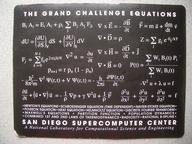Quiz Answer Key and Fun Facts
1. The energy required to increase the temperature of one pound of water one degree Fahrenheit is known as a Btu. For what does this abbreviation stand?
2. Who invented the first closed-tube thermometer, in 1713?
3. At what temperature does the Rankine scale begin?
4. You are cooking scrambled eggs in a cast iron frying pan, and you have noticed the handle has grown rather warm. What type of heat transfer is demonstrated within the pan in this example?
5. What is the term for the amount of disorder in a system?
6. What type of reaction produces heat?
7. What is the Law of Constant Heat Summation, which is used to calculate the change in the amount of heat within a system, better known as?
8. If one mole of silver weighs 108 grams and its heat of vaporization is 250 kJ/mol, how much energy is given off if 20 grams of silver are condensed to liquid at its boiling point?
9. At standard temperature and pressure, what is the heat of formation of water vapor?
10. Not including the Zeroth Law, how many laws of thermodynamics exist?
Source: Author
napkintosh
This quiz was reviewed by FunTrivia editor
crisw before going online.
Any errors found in FunTrivia content are routinely corrected through our feedback system.


